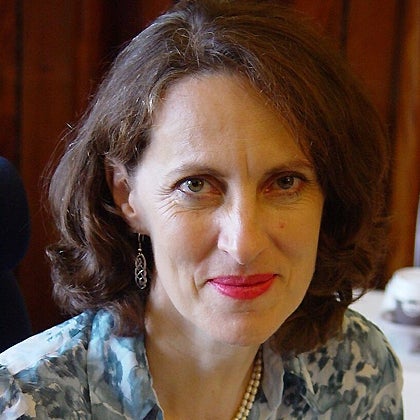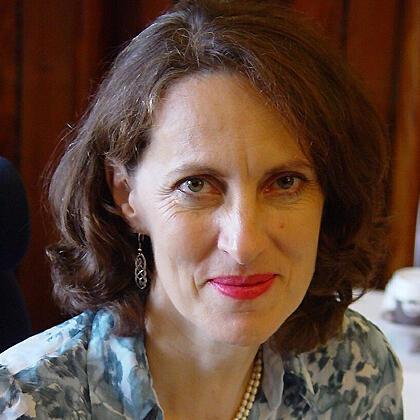Redesigning the World in Which We Live to Put the Planet First
Share
- Details
- Text
- Audio
- Downloads
- Extra Reading
How can we help human society flourish without destroying nature? The Wellbeing Economy and Natural Capital are linked strategies that can help achieve this. The Wellbeing Economy provides design principles to ensure that our planet serves both humanity and the planet’s ecosystems. Natural capital provides design parameters to track the quality and quantity of ecosystems and resources, including the invisible value of nature.
Download Text
Background
In this series of lectures, I shall present the principles and applications of Natural Prosperity - a new philosophy of stewardship and belonging, linking people, place and planet – as the basis for a values-led recovery and recalibration, post-pandemic, of societies around the world.
No matter how challenging, learning how to value our planet in ways that can move people and governments alike to act in the best interests of both humanity and the planet’s myriad ecosystems is the underpinning tenet of natural prosperity and the wellbeing economy. It is also what will be needed if we are to overcome both the climate change and biodiversity emergencies as well as rising levels of social inequity. Over the six lectures, I will look in depth at the principles of natural philosophy and their meaning for wellbeing in a recalibrated post-pandemic world. I will work through the calculus of natural capital both as an economic metaphor for the limited stocks of living and non-living resources on our planet and as a motivation to bring the invisible value of nature into everyday conversation.
Across the world, we are observing that global scale phenomena such as the Covid-19 pandemic and the wildfires, droughts, extreme storms and floods of recent years have the potential to shift our everyday view of the natural world, underlining our dependencies and interlinkages with the physics of our climate and thousands of non-human species. Unfortunately, our current economic system responds to the common needs of humanity and the workings of the planet works in ways that create unsustainable dependencies on global trade, unsustainable consumption patterns and overexploitation of natural resources. Natural prosperity instead defines an economy in which policies, solutions and measures are designed to deliver human wellbeing and geared towards positive, regenerative environmental outcomes. Several countries, including New Zealand, Iceland, Scotland and Wales have already adopted a Wellbeing Economy for their national policies, based on the recognition that development in the 21st century entails delivering human and ecological wellbeing.
In this first lecture I will present an overall picture of Natural Prosperity as it relates to everyday lives - for people living in rural and urban areas, for farmers, entrepreneurs, young people, the most vulnerable and those who are stranded or without employment prospects. I will give examples of how it can start to help human society to flourish without destroying nature. Two of the pillars of natural prosperity are a wellbeing economy and natural capital. The wellbeing economy provides design principles to ensure that our planet serves both humanity and the planet’s ecosystems while natural capital provides design parameters to track the quality and quantity of ecosystems and resources, and their visible and invisible value.
Why Do We Need a New Philosophy?
Even if we live in busy urban places, we are surrounded by other species of plants, animals, fungi and microbes, living their lives alongside us and generally keeping us alive and well, helping us to breathe, pollinating our crops, and providing us with clean air, water and food. When we know more about them, we realize that these living organisms can give us a sense of our locality and at the same time the vast biosphere in which we live.
A shift towards more ecological thinking has been happening with people trying to eat healthily and exercise in the face of Covid-19. Nature is also becoming more evident in the books, poetry, films, arts and music that surround us. The fact that we need and rely on Nature, however, does not necessarily mean that a person’s understanding of this will affect their motivation to safeguard it, and the majority of human lives remain as efforts to survive and thrive that are often irreconcilable with those of the planet’s non-human species.
For many in rural areas and across the developing world, knowledge about nature is localised and linked to a particular place. This is often a knowledge sensed through slow, imperceptible processes, afforded at birth and curated throughout a lifetime of living in a landscape. Successive generations capture incremental alterations as they emerge, building up a sense of changelessness that has been inherited and blended though the experience of living in a particular place with the reality of the world. It is a world where local frugality or abundance is built up alongside a global collective overindulgence where planetary limits are transgressed.
The question is whether we are willing to recalibrate and redesign our societies and economies to ensure local abundance within a globally frugal world, to quote Adrien Plomteux one of my PhD students, that lies within planetary boundaries.
I take much of my inspiration for Natural Prosperity from the inspired writings of people such as Richard Wilkinson and Kate Pickett, Henrietta Moore, Elinor Ostrom, Herman Daly and Bob Costanza, Joseph Stiglitz, Amaratya Sen and Jean-Laul Fitoussi, Tim Jackson, Cormac Cullinan and Michael Marmot. All have tackled inequality, prosperity and wellbeing, but from different aspects. All have contributed to shaping how we can recalibrate the economics model that have in place today.
In most industrialised societies, traditional sources of knowledge have been thrown into disuse. Industrialization dissolved rural and pastoral traditions, along with tribal languages, dialects, vernaculars and nature lore of peoples who did not travel outside of their landscapes. Natural philosophy gained currency, through which Francis Bacon and other contemporaneous thinkers considered the purpose of natural knowledge to be the governance of nature. This ‘New Philosophy’ of the seventeenth century was the philosophy that led to the development of modern science. In Britain the Royal Society for the Improvement of Natural Knowledge – now known as the Royal Society, and supported by Gresham College, became its home. Isaac Newton’s book Mathematical Principles of Natural Philosophy and many subsequent books using this term, espoused a mechanical philosophy of the world, as opposed to that of Goethe, Hegel and Schelling who regarded the natural world as a large organism.
By 1890, Thomas Huxley defined natural knowledge as a scientific understanding of the world, galvanising technological improvements that in turn required new knowledge. It presaged a shift in language in industrialised societies from the organic to the human-made environment. This was a move from distinctive cultural knowledge, created by the varied attributes of landscapes, to the universal cultural knowledge of technologies available worldwide. Unfortunately, the loss of detailed language about local environments was accompanied by the disappearance of many species, the destruction of ecosystems and the loss of whole landscapes. It was as if the loss of words describing It has also meant a loss of human variety, and the spreading of habits that have become indistinguishable, regardless of where people live. These are the habits that have encouraged escape away from traditional cultures, unique languages and birthplace towards “civilisation” in the hope of securing survival.
Views of nature differ around the world. Traditional societies see nature and humans as a continuum; their chthonic legal systems reflect this in both oral and written records. Harming nature is the same as harming yourself. A significant emphasis is often placed on maintaining elaborate arrangements for the stewardship of communal lands. Historically, community lands have often been sacred sites or the safety net for the most vulnerable providing livelihoods and the means for survival; today we also see that they are widely linked to key ecosystem services for water purification, pollination and genetic diversity.
Appropriation of community lands and the commons for agricultural and industrial expansion has been a major tool of government development policies over centuries in driving forward economic development. But we now understand that these processes have undermined the very basis of everyone’s survival on earth. Laying blame for the destruction of the planet finds its home in the negotiations about loss and damages in the climate and biodiversity arena. However, I believe that this approach is just a short-term solution to a much deeper problem of how to continue to thrive on planet earth.
Embedding Natural Prosperity as a values-based approach for the post-Covid recovery and recalibration of the economy means looking at all aspects of human life and the planetary dynamics requires a fundamental redesign of our relationship with the natural world. Max Weber, a sociologist and philosopher described the injury of modernity through the idea of ‘disenchantment’. This is the idea that humans can master all things by calculation, which Weber considered to be a function of the rise of rationalism, and the extirpation of dissenting knowledge-kinds in favour of a single master principle. This disenchantment found its expression not just in human behaviour and policy – including the general impulse to control nature – but also in emotional response. It was about a widespread reduction of ‘wonder’ and an expansion of ‘will’ in which humans have established authority over nature.
This has had the consequence of reducing our interactions with nature, while enhancing our power to determine nature. We find it hard to imagine nature outside a use-value framework; and instead have become experts in analysing what nature can do for us, which is important, rather than to us, which is vital.
Martin Heidegger wrote about this trend when he described the rise of technology and imagination had converted the ‘whole universe of beings’ into an undifferentiated ‘standing reserve’ of energy, available for any use which humans choose to put it. The rise of standing reserves has bequeathed and inadequate and unsustainable relationship with the natural world, and with ourselves as well; we have replaced particularity with fungibility. There is little room for us to encounter ourselves and thoughts and needs before we encounter nature solely as a service provider. Instead, we require nature to have its own life if it is to enrich ours.
Robert MacFarlane has recently written a wonderful bool called Landmarks in which he documents the use of language to do more than describe landscapes and nature. From western Arizona to the highlands and islands of Scotland, he captures how words and placenames are used and valued for aesthetic, ethical and musical reasons. Keith Basso, whose work he quotes, says “The Apache understand how powerfully language constructs the human relation to place and as such they possess a modest capacity for wonder and delight at the large tasks that small words can be made to perform”. In their imagination geography and history are consubstantial – placeless events are inconceivable, in that everything that happens must happen somewhere.
This remains true for everyone – recalling important events people often remember clearly where they were when they found out.
Amongst the Maasai in the Rift Valley of east Africa, the Inuit and Sami peoples in the Arctic and the millions of people living in the areas of their ancestors and birthplace, the very core of survival is being able to live with the idiosyncrasies of nature that comes through a deep understanding of change and a sophisticated linguistic flexibility to capture new knowledge.
The enormous diversity of landscapes, materials and societies has led to an extraordinary range of products to support human survival, but the universal application of this diversity by all societies requires an acceptance that diversity increases resilience rather than weakening it. Increasing the similarity of environments, as industrialized societies have done across the world over nearly two centuries, has eroded the natural variety of the world and by extension increased the fragility of many economies. This was clearly the case for the Covid pandemic.
Assuming a worldview in which prosperity explicitly links people, place and planet, it is fascinating to see how different communities describe prosperity. In research ranging from across the UK to east Africa, Asia, the Middle East and Caribbean, communities have been asked to describe the most important elements of prosperity. Inevitably good health has been one of the top rated. This is hardly surprising, but what the Covid pandemic also showed us was that long periods of time spent away from nature could be highly detrimental to mental as well as physical heath. Time spent in nature can also help mitigate allergies and reduce all-cause, respiratory, cardiovascular and cancer mortality, with the presence, accessibility, proximity and greenness of green spaces determining the magnitude of positive health effects. However, what is not understood is the role of biodiversity within green spaces.
This brings me to the question of the underlying calculus of Natural Philosophy. I see this as being made up of three parts – ecological health and social dynamics that place humans and nature in a continuum; sustainable consumption and production patterns and the derived incomes and stewardship of the wealth of a society; and the norms and behaviours that underpin distributional fairness and equity. All three contribute to the linking of planet, place and people. In subsequent lectures I will describe and exemplify each of these; tonight, I would like to give an overview of the main features of each part.
What should be said at the outset, is that while consistency of measurement is very important, what gets measured will be context dependent. Some equivalencies are easy to understand. Take for example timber – the species grown in different locations for construction will reflect the climatic conditions, the biodiversity and gene pools, as well as certain physical or mechanical properties. With the shift towards a circular bioeconomy in many countries such as Finland, laminated wood is being used as a replacement for concrete and steel; to date 15-storey buildings have been possible. The constraints on height, however, provide opportunities for changing designs for urban areas and green spaces to ones which are more “liveable” and adapted to climate change.
The underpinning constructs for ecological health and social dynamics are the planetary boundaries and safe operating space. Originally presented in 2009 by a group of researchers led by the Stockholm Resilience Centre, the nine planetary boundaries have become a way of determining the extent to which our economies have transgressed the values that would keep humanity safe and avoid catastrophic damages. In the case of climate change, we already understand that we have exceeded the global atmospheric conditions that would enable us to maintain the status quo. Instead, we are having to work hard to pull back on greenhouse gas emissions through multiple channels, decarbonising our economies and setting ever ambitious time targets to reach net zero. This is point where with natural processes such as evapotranspiration and respiration, the planet is absorbing as much carbon as is being emitted. We would need to achieve this at the latest by 2040, and preferably as soon as possible to avoid the global average temperature going above 1.5oC. However, this is very likely insufficient because of all the heat that has already accumulated in the oceans. So, this is why we can hear some talking of Net Negative Carbon – i.e., getting the planet to absorb more carbon dioxide equivalents than it emits.
The other boundaries are stratospheric ozone depletion, aerosol loading, ocean acidification, biogeochemical flows, land-system change, biosphere integrity and freshwater use. We can observe that none work in isolation – they are all interconnected, with feedback loops running between most of them. For example, excess emissions of carbon dioxide are leading to increased ocean acidification, which in turn is affecting the ability of the marine biosphere to take up more carbon. Overuse of freshwater supplies is exacerbated by the droughts and floods caused by extreme events driven by climate change. Aerosol loading is affected by our consumption patterns, influencing tropospheric accumulation of pollutants which in turn affects our health.
Biophysically mediated interactions, including radiative forcing contributed by atmospheric carbon dioxide emitted by land clearing for agriculture or nutrient overuse leaching into freshwater systems leading to eutrophication, have contributed to one third of the compared to two thirds from direct human impacts, parallel human drivers and reactive human-mediated interactions. Reducing the strengths of biophysically mediated interactions could therefore considerably reduce future impacts on the planetary boundaries but could easily cause a shift to another setting with unintended consequences.
The vertiginous downturn of the global economy during the first few months of the Covid pandemic, caused air pollution to dramatically improve. The virtual stoppage of transportation could be seen from the absence of air pollution in satellite images and as well as being monitored on the ground. The combination of mask wearing and the slogans of the protestors around George Floyds death of Can’t Breathe, became an emotional mix aligned with the inability of patients with Covid to be able to breathe.
In considering social dynamics and nature, it is clear from my own experiences living in the Maasai community, that the continuum of living space between houses and outside is as much a biophysical spectrum of warm to cold, light to dark, as it is cultural. Those who remain outside, those who are invited in, those who can enter freely, the formality of greetings reflecting age, status, gender and the ease with which all the children move in and out of different households puts into being the adage that a child is brought up by the whole village.
The ability to appreciate what nature provides is seen as a core tenet of prosperity and leads to the fundamental view that life is a continuum – when you die your spirit moves on whilst the body remains for wildlife to live on.
For those living in cities, such fluidity and connectedness may not always seem be possible, but access to nature is generally open. A 30-minute walk in nature improves heart health, circulation and lower cholesterol, blood glucose, and blood pressure, reduces inflammation, stress and cortisol levels by 15%, boosts immunity and decreases the risk of cancers. Just 20 minutes in nature improves concentration and reduces the need for ADHD and ADD medications in children. Individuals are more likely to repeat being physically active when the exercise is performed in a natural environment.
Why are these elements important? Crucially, being in nature also requires us to locate ourselves, to use language and often to express emotions. This is not to suggest that need to adopt a literal animism, but rather that by using the contours and colours of words we become more inseparable from the feelings we create in relation to situations, to others and places. Language carries a formative as well as informative impulse. This illative power can restore a measure of wonder and appreciation of our relations to nature and an essential element in the shift towards learning how to value our planet in ways that can move people and governments alike to act in the best interests of both humanity and the planet’s myriad ecosystems.
We will need this dimension in our recalibration if we are to overcome both the climate change and biodiversity emergencies as well as rising levels of social inequity.
The next parameter space is around consumption and production patterns and the derived incomes and wealth. Do we have a problem with excessive consumption today? Yes, the growing rates of per capita consumption are linked to rapidly increasing greenhouse gas emissions, pollution and waste. Has it become an addiction? Yes, in some parts of the world. Do we know how to tackle the issue? This is a key part of Natural Prosperity. Prosperity and Wellbeing go hand in hand. But prosperity is not simply “wealth plus wellbeing”. To prosper is to understand the meaningfulness of our lives in terms of the quality of our lives and relationships, the resilience of our communities and a sense of individual and collective meaning. It is about hope for ourselves and the next generations’ future. And as HRH Prince Charles said in his preface to Tim Jackson’s Prosperity without Growth, prosperity is also about tackling the impact of consumerism which currently depends upon the unfettered exploitation of the “extraordinary bounty of Nature”, and the limits that we have failed to respect.
Initially we were given ideas about downscaling production and consumption with the publication of Limits to Growth by the Club of Rome in the 1970s and developed into the underpinnings of sustainability. Concepts such as degrowth, launched in Paris in 2008 at the first International Degrowth Conference in Paris, followed on. Today, sustainable degrowth has come to mean decreasing production and consumption in a way that increases human well-being and enhances ecological conditions and equity. Tim Jackson has articulated what this implies in his book.
Inevitably the idea of degrowth challenges many of today’s social and cultural values. For example, it affects the relative importance that people place on the changes they experience in their lives to do with beliefs about the means of living- honesty, hard work, playing the system, and the ends of living such as health, status, power, influence, peace and so forth. It also goes to the core principles and ideals of cultural values upon which entire communities exist; their customs, values, beliefs such as wealth, success, power and prestige.
Understanding the structure of social values, such as consumerism, goes back more than half a century to the work of Alexis de Tocqueville, whose views on political and social life in America were captured in Democracy in America – work that some might say is the equivalent to Adams Smith’s The Wealth of Nations in economics. Many researchers followed after de Tocqueville; Veblen’s work on the Theory of the Leisure Class, and the subsequently academic research by Maslow, Riesman, Bell, Rokeach and Thurstone. They all helped to measure social values and explore the dynamics between them. Maslow saw a structure and evolution associated with physical survival at the base level to those associated with self-realisation such as the intellectual and moral levels of motivation. Rokeach, a psychologist, formulated social values into terms with properties: beliefs; these included conceptions of the means of living i.e., preferences and prescriptions about desirable modes of conduct, and ends of living i.e., end-states of existence and social ideals.
Such formative, fundamental beliefs are thought to be established during adolescence and early adulthood and informed by an individual’s prevalent perceptions from close kinship groups and family, by exposure to the main socio-environment and influences of the times. They can serve, quite pragmatically as a way for an individual and society to adapt to and justify personal and cultural practices. Some researchers call this motivated cognition – these are beliefs that determine and reflect an individual and society’s responses to the world to survive, connect with kinship groups and create social hierarchies. The term values have broadened out to include the motivations behind human behaviour and the conscious and unconscious feelings behind them.
Into this world of values come different aspects, such as assumptions, perceptions, attitudes, judgements and opinions, intentions and actions. Values contain a multiplicity of elements which translate into an individual’s worldview. These can change and evolve through a lifetime, in response to for example biological changes in the body, life’s challenges and experiences, such a living with a disease, going through a trauma or facing poverty. Today’s values reflect the move from authoritarian and inflexible institutions to flux and heterogeneity. Researchers in the field have provided us with quantitative and qualitative approaches and answers that are used to anticipate many aspects of our lives – from polling to gender equity, and increasingly our addiction to buying “stuff” and retail therapy.
Finding solutions to the overexploitation of resources and the impacts that this is having on the climate, will inevitably force us to examine the social and cultural values associated with our current patterns of production and our global addiction to consumption.
This is where Natural Prosperity offers some solutions.
The first concerns breaking addictions with hierarchy and accumulation. Developing Natural Prosperity is not only about different measures or different policies, but also about changing our relationship to the planet and the economy and our approach to its management and governance. It is designed with the purpose of serving the wellbeing of people and the planet first and foremost; in doing so, it delivers social justice on a healthy planet.
Natural Prosperity therefore goes beyond just fixing, healing and redistributing to building an economic system that gets it right the first time. It is about actively co-creating, through participatory processes, the better world we envision. It is about changing the way we view, manage and engage with the economy to ensure dignity and fairness. By recognizing that the ultimate measure of our success is not wealth but wellbeing now and for generations to come. These ideas are reflected in the work of the Wellbeing Economy Alliance.
Moving from GDP to Natural Prosperity is about the shift towards a circular economy – one that goes well down the pathway to designing products and services that do not cause environmental harm and which genuinely can transform the ways in which we consume.
The shift requires abandoning many of the standard economic approaches which treat nature through abstract models to inform decision making. Once we realise that the way we produce and provide for one another is influenced by our geography, history, culture, values, policies, and priorities, we realise that there can be no one-size-fits-all model. This recognition removes society and the economy from being an abstract ‘technical’ system, to an aspect of life on this earth. This places the economy back into the sphere of democratic influence, as its shape and form should be determined by the people who comprise it.
The final parameter space speaks to distributional fairness and equity. In their book, The Spirit Level, Wilkinson and Pickett provide a solid foundation linking income inequity with a wide range of diseases. In his latest Ted talk Richard notes the striking difference between people caught unawares and posing for others to see. What the pandemic also brought out were the symptoms of stress and panic that a lack of oxygen and clean air by those suffering from Covid also created. Increasingly health professionals have also recognised that the separation from nature created through lockdowns has been an important contributor to stress.
Natural prosperity is a way for industrialised societies to achieve equity and wellbeing based on a lifestyle of planetary stewardship which delivers local abundance within a new context of global frugality that enables us to stay within the planet’s limits. It is also a solution for the root causes of rising levels of ill health and stress associated with inequality, exposed during the current Covid pandemic.
Natural Prosperity policy making requires a shift in how we develop our policies, beginning with the goals we set. The goal of policy making shifts from promoting just economic growth, to promoting the wellbeing of people and planet. Such policy design would aim to support the areas of society, the economy and nature that contribute to collective wellbeing, while shrinking those areas of the economy that damage it.
Wellbeing Economy policy design, therefore, moves the government beyond just correcting ‘market failures’ to proactively fostering the activities and behaviours important for our wellbeing. This is no small shift, as you will have to move from focusing on problems or deficits (e.g., a lack of skills, tech or finance) to focusing on your priorities and strengths. This will require entering into new territory, to understand the existing actors, actions, behaviours, and institutions in your communities that are aligned with your Wellbeing Vision and goals. You will have to gather new evidence, in areas that have not been previously considered or valued as part of the ‘economy’, in order to develop a holistic compass to help guide decision making. It will require experimentation and co-creation to find the strategies and policies that can support you and your communities to align your economies with your vision for a better world. Wellbeing economy policy design is about using participatory and holistic methods to develop policies for the better world we envision.
Goal-oriented: the economy is not a means-and-ends in and of itself. It is a system to promote human and ecological wellbeing. Policy makers consistently reflect and align policies and processes to achieve the priority objective(s) determined by citizens.
Participatory/Co-creative: Policy is developed through open, co-creative and transparent processes. citizens are able to meaningfully engage and contribute throughout the policy design process.
Context-Appropriate: here are no “one-size-fits-all” solutions. Economic strategies and policies are based on local values, context and objectives.
Iterative: Processes encourage continuous learning and experimentation to find innovative policy solutions that suit the context.
Holistic: The economy is interconnected with other policy areas and integral to social, environmental and spiritual dimensions of life.
Evidence-based: Processes are informed through the systematic use of qualitative and quantitative evidence
Positive framing/Strength-based: Policy is focused on achieving the aspirations of society rather than addressing negative outcomes. Positive framing is used to focus on the strengths and aspirations of the community
Multi-dimensional: We live in complex systems and therefore must consider negative and positive inter-relationships between dimensions at every step of the process.
© Professor McGlade 2021
This event was on Tue, 05 Oct 2021
Support Gresham
Gresham College has offered an outstanding education to the public free of charge for over 400 years. Today, Gresham College plays an important role in fostering a love of learning and a greater understanding of ourselves and the world around us. Your donation will help to widen our reach and to broaden our audience, allowing more people to benefit from a high-quality education from some of the brightest minds.


 Login
Login







